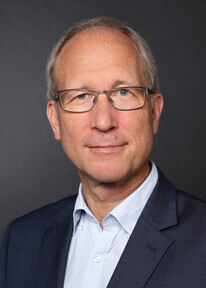The next speaker of the Wigner Colloquium is Prof. Matthias Wuttig, the Chair of Physics of Novel Materials at RWTH Aachen University in Germany. The title of his lecture is: Functional Materials by Design: Developing Treasure Maps with Quantum Chemistry.
Wigner Colloquia is a highlighted seminar series of the Wigner Research Centre for Physics. Invited speakers are the most excellent researchers from different areas of physics. The goal of the program is to give first-hand knowledge to our colleagues and the interested professional public from well-known scientists from all over the world.

Matthias Wuttig (Photo: RWTH Aachen University)
Developing novel materials is the goal of Matthias Wuttig's work. In doing so, he relies on an unconventional approach, the development of 'treasure maps' to identify promising materials. This has enabled the identification of fundamental relationships between relevant material properties and the underlying chemical bonding mechanism. He is particularly interested in the design of materials for photonic applications, data storage and energy conversion.
The CV of Matthias Wuttig is available here.
Abstract of his lecture:
Scientists and practitioners have long dreamt of designing materials with novel properties. Yet, a hundred years after quantum mechanics lay the foundations for a systematic description of the properties of solids, it is still not possible to predict the best material in applications such as photovoltaics, superconductivity or thermoelectric energy conversion. This is a sign of the complexity of the problem, which is often exacerbated by the need to optimize conflicting material properties. Hence, one can ponder if design routes for materials can be devised.
In recent years, the focus of our work has been on designing advanced functional materials with attractive opto-electronic properties, including phase change materials, thermoelectrics, photonic switches and materials for photovoltaics. To reach this goal, one can try to establish close links between material properties and chemical bonding. However, until recently it was quite difficult to adequately quantify chemical bonds. Some developments in the last decades, such as the quantum theory of atoms in molecules have provided the necessary tools to describe bonds in solids quantitatively. Using these tools, it has been possible to devise a map which separates different bonding mechanisms. This map can now be employed to correlate chemical bonding with material properties. Machine learning and property classification demonstrate the potential of this approach. These insights are subsequently employed to design phase change as well as thermoelectric materials. Yet, the discoveries presented here also force us to revisit the concept of chemical bonds and bring back a history of vivid scientific disputes about ‘the nature of the chemical bond’.
Date: 7 Mars 2023, 14 p.m.
Place of the colloquia: Building 1, meeting room
Zoom link:
https://wigner-hu.zoom.us/j/87495150521?pwd=MnRicmRTWFNSdUVETjlSbG9HRXZLZz09
Meeting ID: 874 9515 0521
Passcode: 022440



